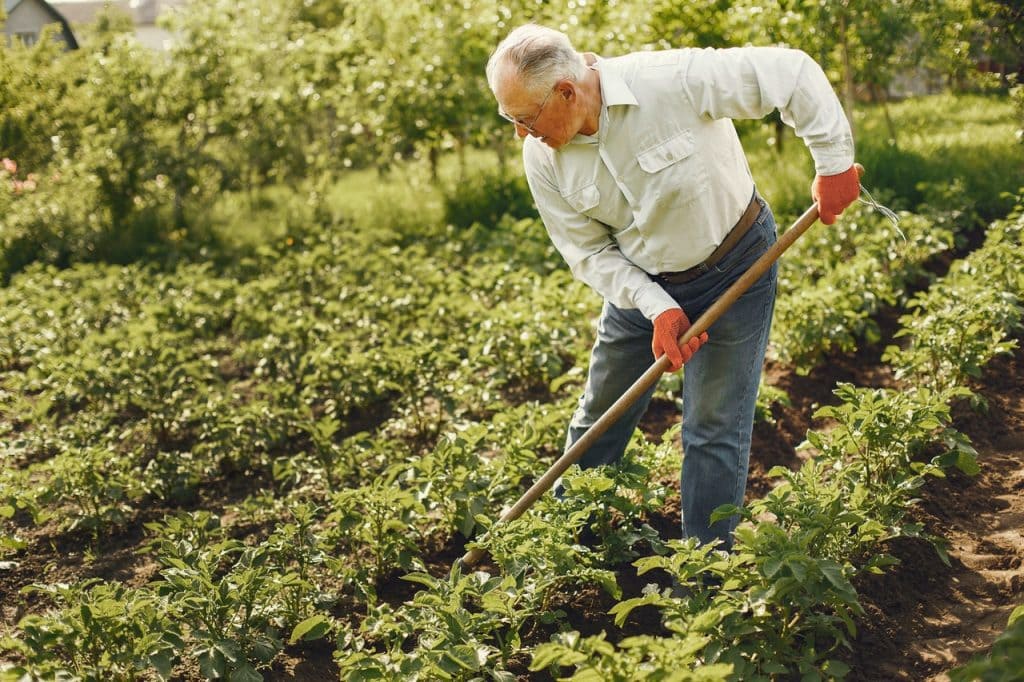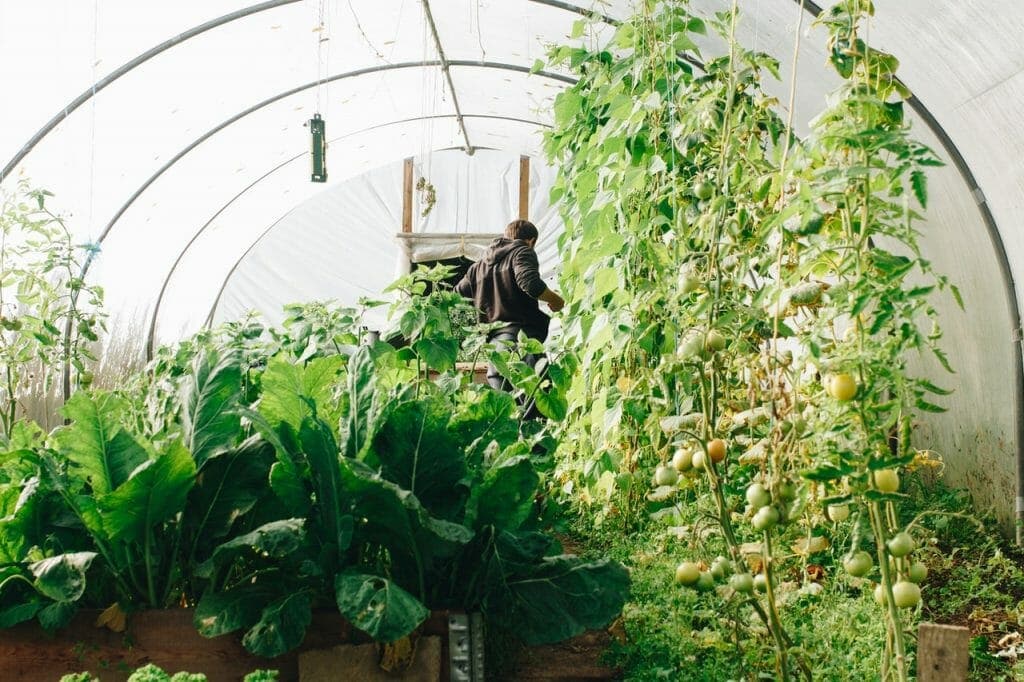Written by Admin and published on https://www.southernliving.com/
Starting seedlings, preparing the soil, buying mulch, deterring insects and rodents, planting new plants, spraying for diseases, trimming, cutting, deadheading, thinning out, dividing, adding nutrients, and picking produce and herbs are just a few of the tasks a gardener performs each year. Gardening can be an obsession that soon becomes a year-round activity, as you’ll soon see. For everything to bloom and grow on schedule, your plants must be planted, pruned, fed, and cared for throughout the year. Truly organized gardeners don’t fly by the seat of their pants or take a hint from the gardening actions of neighbors, but actually, adhere to a gardening production schedule each season.
Month-to-Month Garden & Lawn Care Checklist
January
Turf―A dry winter day is a good time to mow a dormant, warm-season lawn. This grooms the lawn and removes fallen leaves and pine needles. It also allows you to inspect your yard for winter weeds. Control them by spraying when the weather warms in spring.
Planting―This is a good time to plant new shrubs and trees. Evaluate your landscape, remove unattractive plants, and replace them with others that you prefer.
February
- Pruning―Except for maples and birches, now is a good time to prune trees. If limbs are more than an inch in diameter, use the three-step method for removing branches. Make the first cut on the underside of the limb around 6 to 8 inches away from the trunk. Cut about half the thickness of the branch. Go to the top of the limb, and cut off the limb halfway between the underside cut and the trunk. The resulting stub should then be cut within 1ž2 inch of the trunk.
- Lawns―Winter weeds are evident in dormant warm-season turf now. Apply spot applications of post-emergence herbicides or hand pull to control. When selecting a post-emergence herbicide such as Purge, Weed-Stop, or Weed-B-Gon, make sure you follow label directions, and that the product is approved for your particular grass type. Otherwise you may injure or kill it.
- Cut branches―When forsythia, quince, star magnolia, and saucer magnolia buds show a touch of color, they are easy to force into bloom indoors. Cut branches, taking care not to destroy the natural shape of the plant. They should be in full bloom several days after you place them in a vase of water indoors.
March
Lawns―As warm-season turf begins to green up in your area, it’s time to think about liming your grass. If your soil is acid, you need to do this every couple of years. The best way to tell if you need lime is with a soil test, which will let you know exactly how much to apply. But if you’re not able to get your soil tested, use the general guideline of 15 to 20 pounds of lime per 100 square feet of lawn area. Pelletized lime is less messy and easier to apply than the white-powdered kind.
Azaleas―As this Southern classic comes into bloom, be sure to mark the color of each plant if you haven’t planted them by color. For maximum impact, group azaleas in masses of one color or in layers of color. It is okay to move them while they are blooming. But if you wait until they finish, they can be rearranged, pruned, and shaped for a better show next year.
April
- Mulch―Now that winter is gone, remove and replace mulch around such plants as azaleas, roses, and camellias because disease spores and insects may have overwintered in this material. If you think disease or insects are not a problem, just freshen your mulch.
- Lawns―It’s time to start cutting warm-season turf such as Bermuda, St. Augustine, and centipede. Be careful not to scalp your lawn. Adjust the blade height so that the turf looks cut when finished, but you can’t see spots of soil. A good rule of thumb for spring cutting: Remove only about the top third of the grass blades each cutting. During periods of fast growth, try to cut your lawn at least once a week.
- Herbs―Once the frost period has passed, it’s time to plant herbs. Culinary herbs are easy to grow, but be sure that you’ve planted enough of the ones you frequently use. As a general rule, it takes twice as many fresh herbs as it does dried ones to equal the same amount of flavor in cooking.
May
- Lawns―Once your brown turf has turned green, it is time to fertilize on a regular basis. Some warm-season grasses, such as hybrid Bermuda and Zoysia types, like high-nitrogen-based lawn fertilizers. Some turf, such as centipede, needs little or no fertilizer and minimal amounts of nitrogen. Remember high-nitrogen fertilizers always have a large first number in the ratio listed on the bag. Be sure to apply according to label directions to prevent burning your lawn.
- Pruning―Once plants have leafed out, it is time to make a final pruning to remove winter damage. Always cut the limb or shoot back to live wood. If the damage to the plant is severe, you might consider replacing it.
- Annuals―It’s time to finish planting your summer annuals, such as petunias, marigolds, salvia, and impatiens. If the plants are in pots or trays, make sure the roots are not so matted they can’t expand outward into the soil easily. If they are, gently pull the roots apart.
June
Water―Pay attention to hanging baskets and containers, because they dry out more quickly with the warmer temperatures. Irrigate plants at dawn and dusk to reduce water loss from evaporation. As you make additions to your garden, you will need to water them more than established areas.
Houseplants―Place houseplants outside in a shady location to enjoy the fresh air and rejuvenate. Water regularly, and feed with an all-purpose (20-20-20) water-soluble fertilizer to encourage growth.
Mulch―Apply extra pine straw or shredded bark mulch around newly planted trees and shrubs to better transition these plants into your garden. The extra mulch will reduce water loss and heat stress to the new roots.
July
Lawns―Raise the cutting height of your lawnmower 1 to 1.5 inches to help your grass survive drought and heat. Tall turf shades the soil, slows evaporation, and reduces weeds.
Birdbaths―Relocate birdbaths to a shaded spot to slow evaporation and keep water from becoming too hot. Placing the bath near a small tree or large shrub provides shelter for the birds and encourages use.
August
- Vegetables―It’s time to plant fall vegetables in the Upper South. Set out transplants of broccoli, cauliflower, and collards. Sow seeds of beets, lettuce, English peas, spinach, turnips, and mustard.
- Lawns―If your grass is dry, do not mow until you have watered or until it rains. Mowing a dry lawn will further stress the turf and expose it to the drying effects of the wind and sun.
- Iris and daylilies―Now is a good time to divide these spring-blooming perennials. Dig clumps that have become crowded and that have not been blooming as fully as in past years. Divide tubers and roots, and trim dead portions. Use younger, vigorous sections for replanting. Prepare new beds by amending soil with composted pine bark and sphagnum peat moss to a depth of 8 to 10 inches.
September
Fall planting―Begin planting trees and shrubs this month. Planting shrubs in autumn allows them time to grow roots and transition into the garden.
Water―As temperatures begin to cool, plants need less water. Adjust your watering schedule for lawns, borders, and containers. Pay close attention to containers as they tend to become waterlogged.
October
Turf―Overseed warm-season grasses such as
centipede or Bermuda with annual ryegrass for a green lawn during the upcoming winter months.
Color beds―Remove spent summer annuals,
prepare the soil, and plant cool-weather annuals now. Add a balanced slow-release fertilizer, organic matter such as composted pine bark, and then till
the bed before planting.
Fall greens―It’s not too late to sow seeds of mustard, collards, turnips, and lettuce for a fall garden.
In the Upper and Middle South you may want to use transplants of lettuce for best results.
November
Compost―Cleaning up the garden will yield plenty of fallen leaves and plant debris for compost. In an out-of-the-way corner of the garden, mix green and dry materials with a shovelful of soil and an optional handful of fertilizer (any kind except a weed-and-feed product). Sprinkle with water weekly if there is no rain. You’ll have compost by spring, sooner if you turn the pile.
Lawns―Fertilize tall fescue and other cool-season lawns in the Middle and Upper South with a quality lawn fertilizer, such as 30-2-4 or 29-3-4, that contains timed-release nitrogen to prevent burn. It will continuously feed your lawn until time for a spring feeding.
December
Lime―If the soil is acidic, your landscape probably could benefit from an application of lime. Broadcast using a fertilizer spreader, or apply by hand. Always wear gloves and distribute evenly. Because lime takes a long time to react with the soil, winter applications help the spring garden. Apply at the rate of 15 to 20 pounds per 100 square feet. If you are unsure of
how much lime your soil needs, have a soil test performed.
Irrigation―If your automatic watering system stays on all year, it’s time to adjust the amount of watering during each cycle. Many dormant plants require lower amounts of water in colder months. A good rule of thumb is to reduce irrigation time by half when night temperatures remain in the 40s or below. Turn the system off in rainy periods to reduce costs and prevent overwatering.
Original post here https://www.southernliving.com/marketplace/garden-lawn-care-checklist/.



